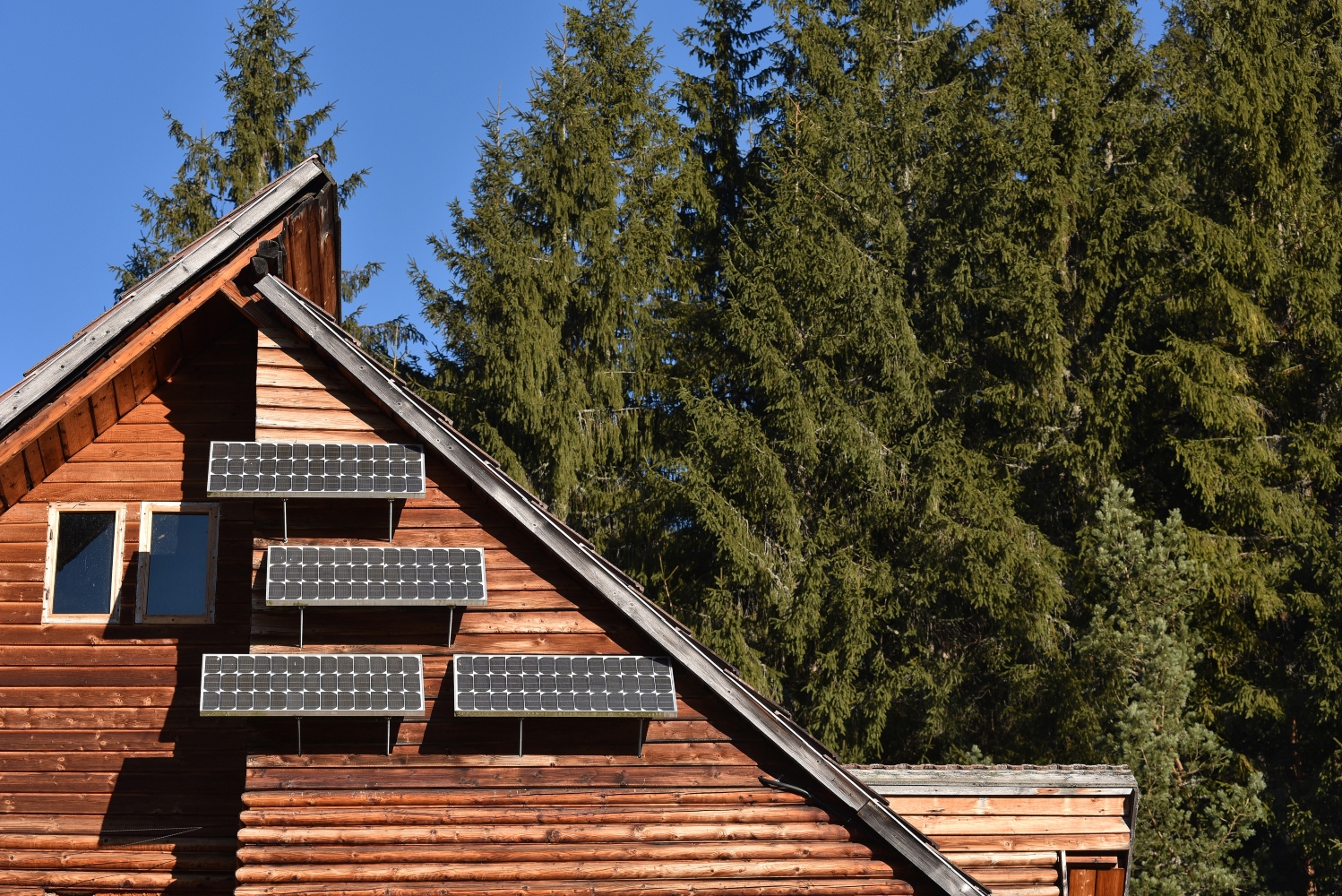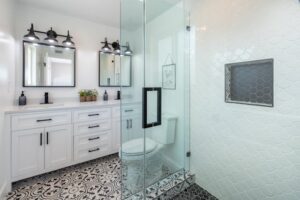
Solar panel on a wooden cottage in the forest
The history of solar panels has been one of the utilitarian aesthetics. These reflective panels were put on buildings to serve a purpose, and that purpose wasn’t necessary to look good. However solar panel technology continues to expand and designers have begun to put these panels to work both as sources of energy and sources of beauty.
The Visual Power of Angles
When a building is squared up, solar panels can only be an add-on to a flat surface. However, modern construction and design have incorporated the reflective power of solar panels into roofing structures and shady pergolas to the point that buildings from Singapore to British Columbia can use solar to lower power usage put natural light to its best use, and look amazing.
From Schools to Office Buildings
The cantilevered roof of the only net-zero energy school in all of New York City is located on Staten Island. The structure is designed to be
- extremely energy efficient
- covered in both flat and angled solar panels, and
- self-sustaining
Of course, school construction decisions must meet rigorous guidelines. In addition, budgetary constraints can be extreme. However, authorities were able to come up with a design that could be energetically self-sustaining by routing the design and decision process through just a couple of feedback loops: energy efficiency and frugality.
Work With a Company that Shares Your Vision
If you’re looking to build a new building or update your current facility, schedule a conversation with experts on commercial solar New Mexico. Solar panels have changed radically over time. Not only are these tools lightweight, but they can both reduce your utility expenses and protect the roof of your building. No matter where you live, the elements can be tough on a structure. Free electricity and the chance to extend the life of your roof? It’s time to look at solar.
Solar Farm Construction
In addition to incorporating solar panel applications into existing and new commercial buildings, the beauty of solar farms continues to dazzle around the world. For whimsy, enjoy the themed Mickey Mouse solar farm near Disneyland in California, which uses nearly 50,000 solar panels to create a design that includes ears.
The airport of Chattanooga, Tennessee boasts a solar farm that generates more than 80% of the needs of the airport and looks like a stream, wandering down the hillside. Finally, consider the Crescent Dunes just outside Las Vegas. This round solar farm, set in a huge basin, generates such a concentration of solar capture that the first test run killed birds. This problem has been corrected and the farm now generates power for more than 70,000 desert homes.
Angular Flexibility
One of the most commonly shared factors of building construction is that buildings are static; they’re not supposed to go anywhere or move. However, the addition of solar panels adds a layer of flexibility that was not previously required. If solar panels can shift and change angles throughout the day, they can capture more power. This shifting of solar panels alters the reflective qualities of the building façade. Pergolas, porches, and canopies around the world have turned solar panels into works of functional art.
Increased Cooling Power
By using them to create shade, such as in the construction of solar canopies to cover hot parking lots, solar panels can also create the chance to move from a cool car to an air-conditioned building without striding through a steamy, reflective parking lot. The construction of the canopies over the parking lots at Naranja Park in Oro Valley, Arizona, demonstrates the shading power of solar panels.
Properly mounted, these panels can increase safety, by creating a spot to mount security lights, and can protect the parking lot surface from brutal sun damage. Finally, they reduce the heat stress put on citizens walking through the lot.
No matter the ultimate design goal, building construction will need to deal with the energy of the sun and the damage that heat build-up can do to construction materials over time. The addition of solar panels can reduce utility costs, beautify buildings, and shield structures from the damaging rays of the sun.


